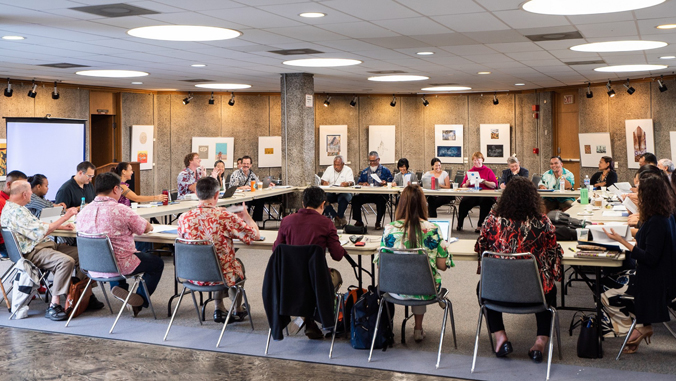
The University of Hawaiʻi at Hilo hosted a conference in January of educators from Hawaiʻi and 10 Pacific Island nations who are working towards encouraging students from underrepresented populations to pursue careers in science, technology, engineering and math (STEM).
At the conference, the Islands of Opportunity Alliance (IOA), led by the UH Hilo chancellor’s office, kicked off their 2019 STEM mentorship programs, which are funded by $600,000 of a continuing $4 million grant from the National Science Foundation.
Topics at the conference included inter-campus programs, curriculum enhancements, student learning communities, peer tutoring, enrichment through research experiences, the promotion of STEM graduate degrees and employment, institutional support and sustainability plans.

UH Hilo serves as the administrative hub for the IOA, including 10 other partner institutions in American Sāmoa, Guam, Hawaiʻi, Palau, the Federated States of Micronesia, the Marshall Islands and the Northern Mariana Islands.
“We share the common goal of increasing underrepresented professionals in STEM fields and I feel inspired by each member of our alliance,” said Marcia Sakai, interim chancellor at UH Hilo and principal investigator of the program.
The main goal of the alliance is to increase the number of underrepresented minority students, with a focus on Native Hawaiian and Pacific Islander students who graduate with baccalaureate degrees in STEM disciplines, and go on to pursue graduate degrees or enter a STEM career in their local communities.
“The benefit is not just the STEM degree, but what the students are going to do with their STEM degree,” said Joseph Genz, UH Hilo associate professor and IOA project director. “In the vast majority of cases, that means going back home to their island communities and using their degrees to build up the capacities of their communities, fostering a system of self-empowerment.”
For more on the story go to UH Hilo Stories.
–Written by Leah Sherwood, a graduate student in the tropical conservation biology and environmental science program at UH Hilo.

